make discoveries that help us learn more about the Red Planet's past and take us a step closer to humanity's potential future living there — and this year was no exception.
.
From the iconic "spiders on Mars" and a giant dog-shaped blob to an underground ocean and other newly discovered water deposits, here are our 10 favorite things found on Mars this year.
Related: 32 things on Mars that look like they shouldn't be there
Giant underground ocean
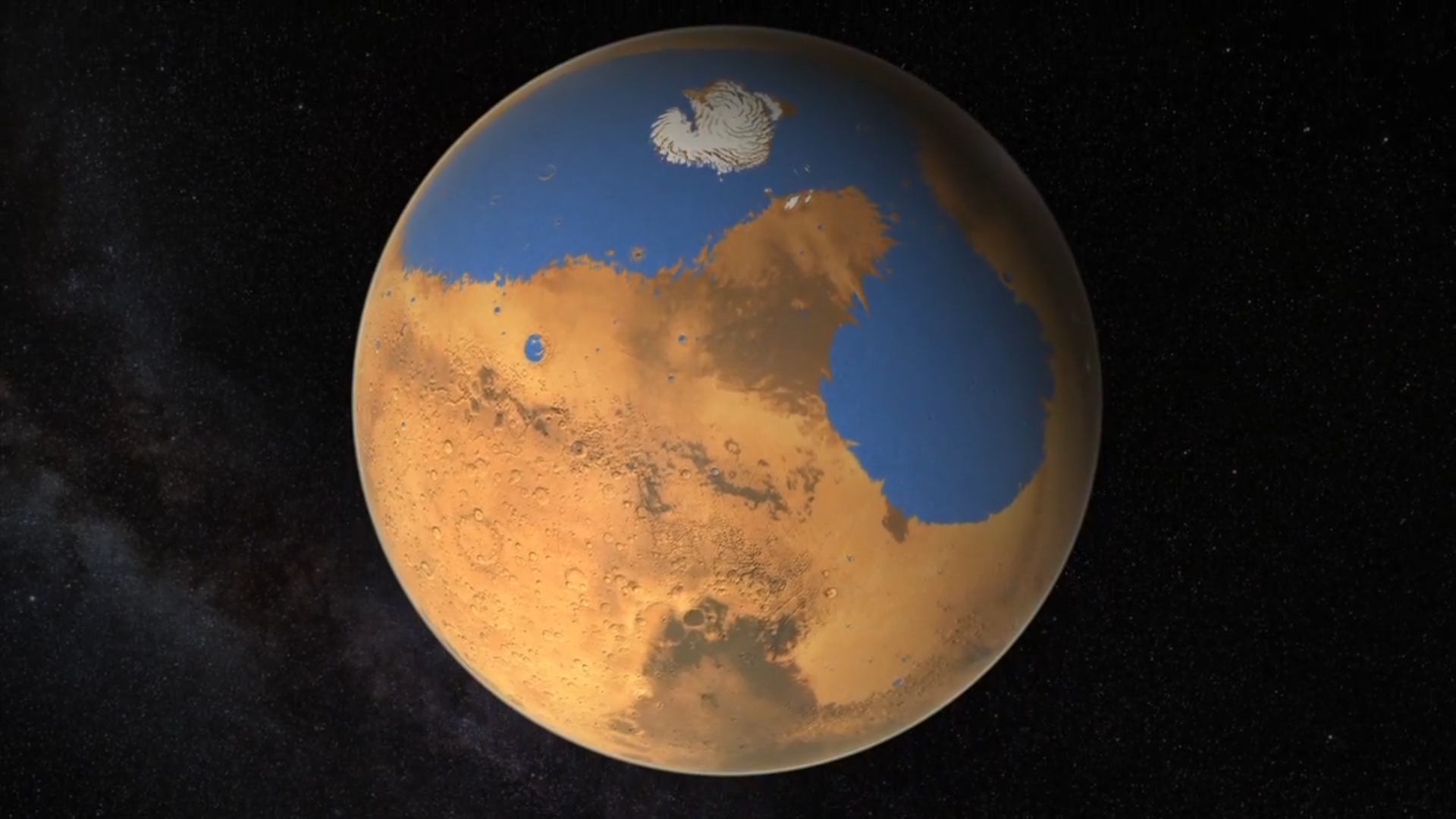
.
NASA's InSight lander discovered the underground reservoir in a layer of rock 7 to 13 miles (12 to 20 km) beneath the planet's surface by analyzing more than four years of "Marsquake" data. Although no existing drilling methods can reach these depths on Earth, this reservoir could be hugely important to future astronauts if we can find a way to reach it.
.
"Spiders" swarm "Inca City"
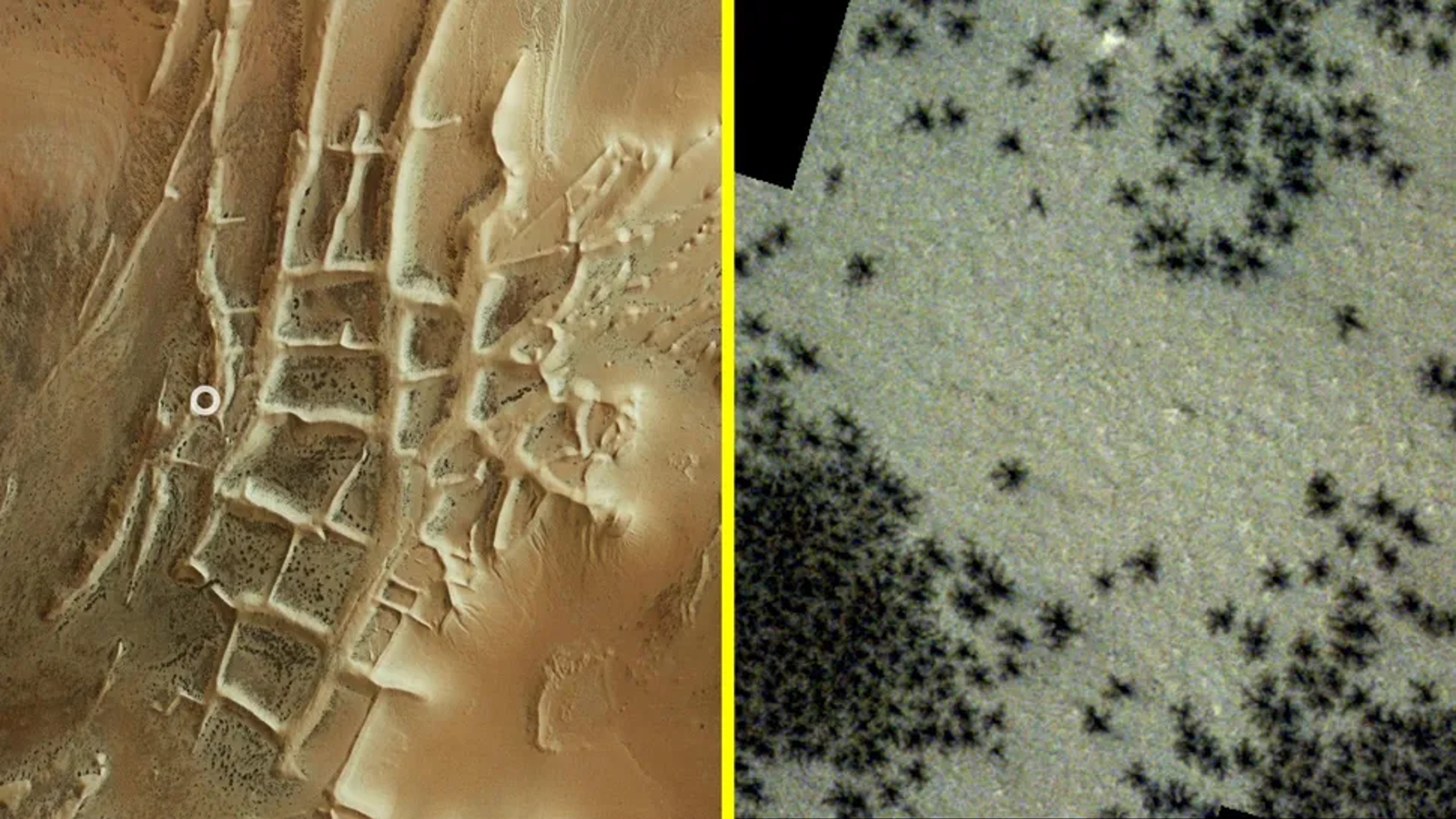
when carbon dioxide ice sublimates — or turns directly into a gas — and drags up dust from below that settles into strange shapes on the ground.
, known as the "Inca City" formation.
, which will help scientists learn more about these strange structures in the future.
Martian dog and mystery blobs
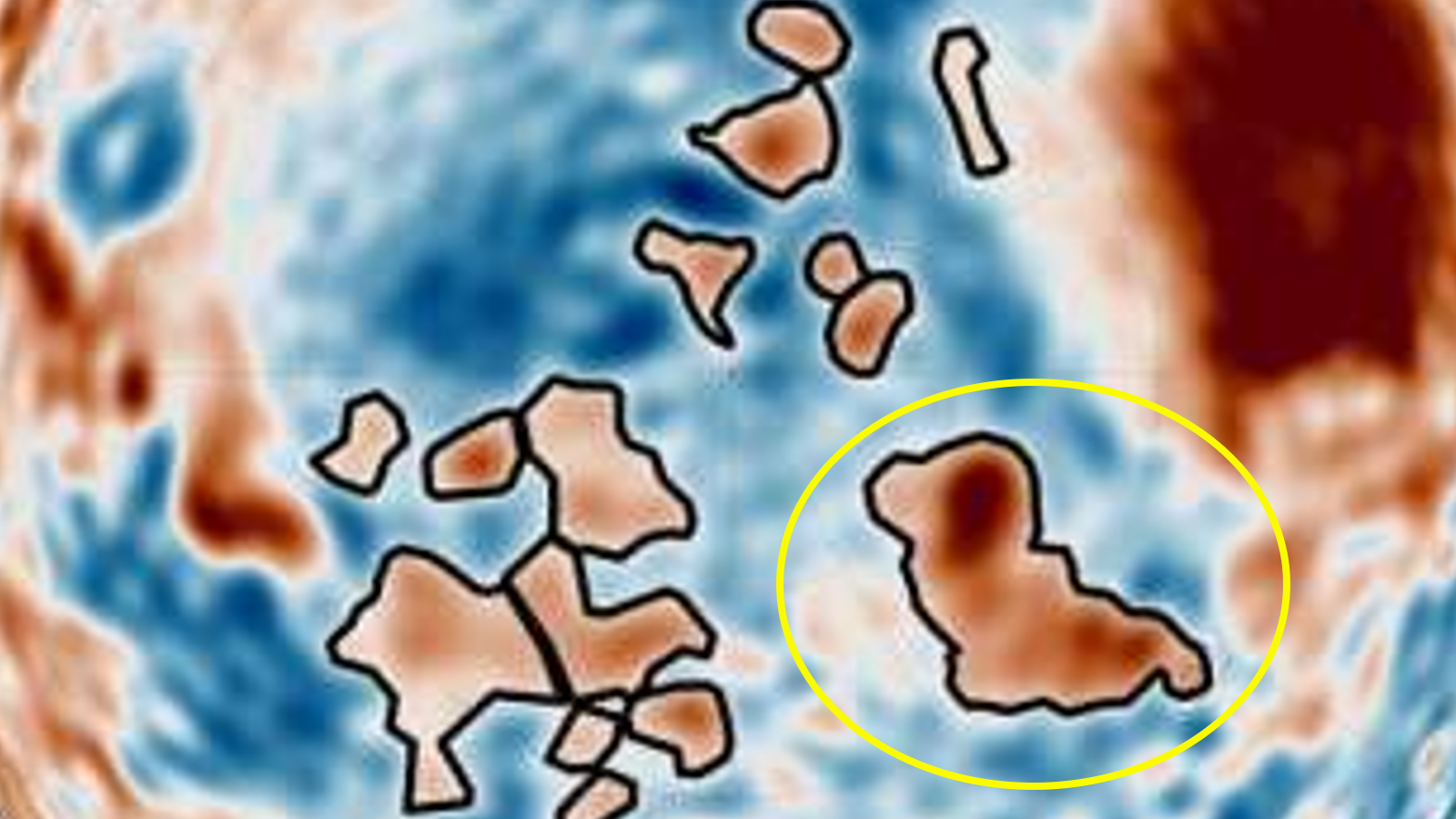
surrounding Mars' north pole, thanks to a first-of-its-kind "gravity map."
The new map was created using data from the InSight lander and Mars Express orbiter, revealing 20 underground structures with densities between 19 to 25 pounds per cubic foot (300 and 400 kilograms per cubic meter) higher than the surrounding bedrock. However, it is currently unclear how they formed and what they are made of.
The same research also confirmed the presence of a gigantic, solidified lava plume spanning 1,100 miles (1,750 km) beneath the solar system's tallest peak, Olympus Mons — a giant volcano standing more than 16 miles (25 km) above Mars' equator.
Massive volcano "hiding in plain sight"
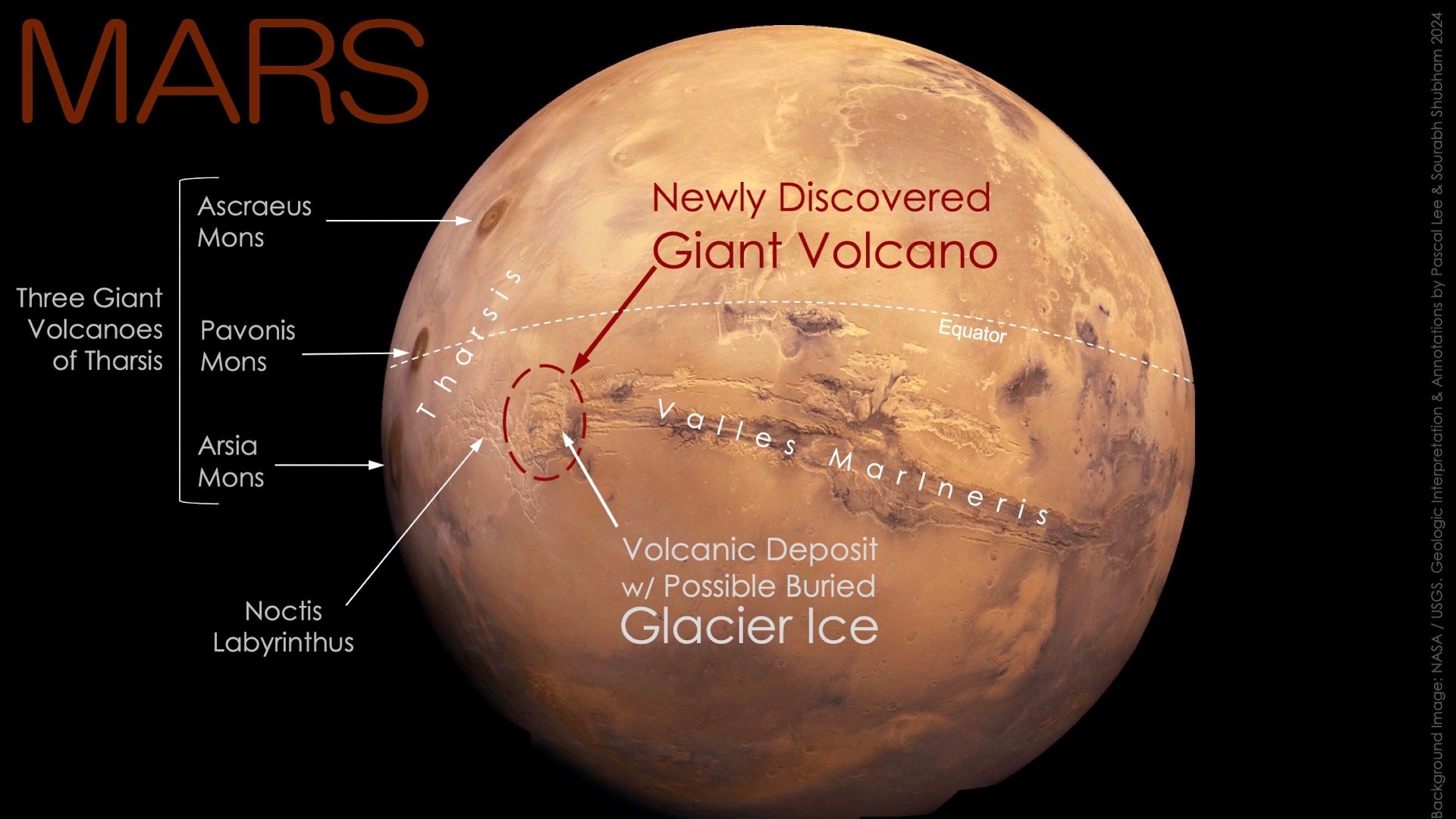
, spanning more than 280 miles (450 km) across.
The giant volcano, which is still unnamed, had gone unnoticed until now because it has been massively eroded, meaning little of it remains above ground. However, researchers studying the region noticed the area was surrounded by the remains of ancient slopes that would have once towered above the surrounding landscape.
Researchers also spotted what appears to be the remains of a sheet of buried glacier ice near the base of the volcano, which could make the volcano a "prime location" for astrobiological research.
A salty smile
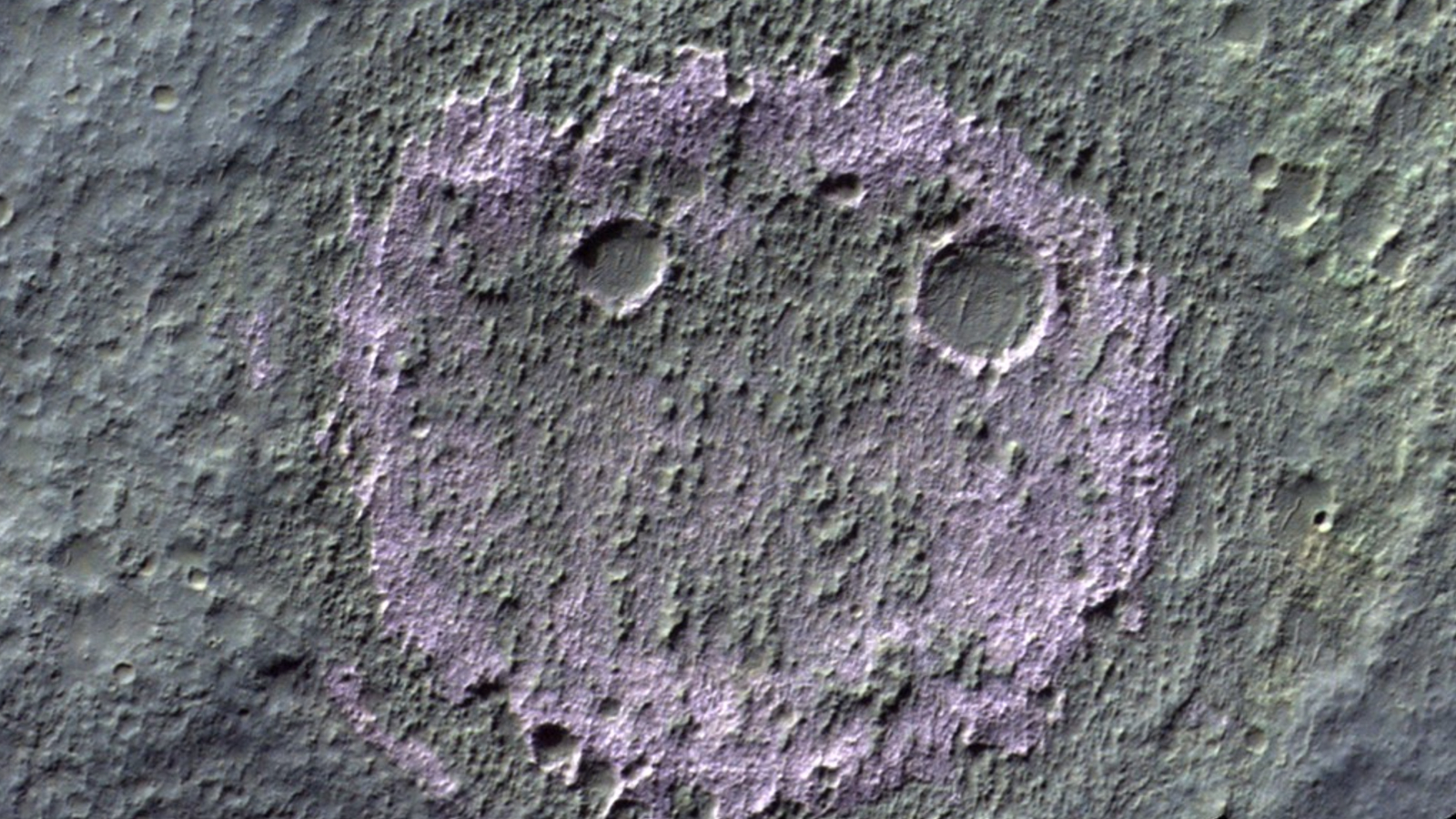
beaming up from the surface of Mars as they surveyed the alien landscape.
The grinning shape, which is made up of a ring of ancient chloride salt deposits with a pair of meteor-crater eyes, was snapped by ESA's ExoMars Trace Gas Orbiter. The chloride salt appears pink in the image because it was snapped in infrared. Normally, the smile would be invisible to the naked eye.
The photo was taken as part of a study that surveyed almost 1,000 similar deposits, which are all thought to "provide optimal conditions for biological activity and preservation," researchers wrote.
Frosty peaks full of water
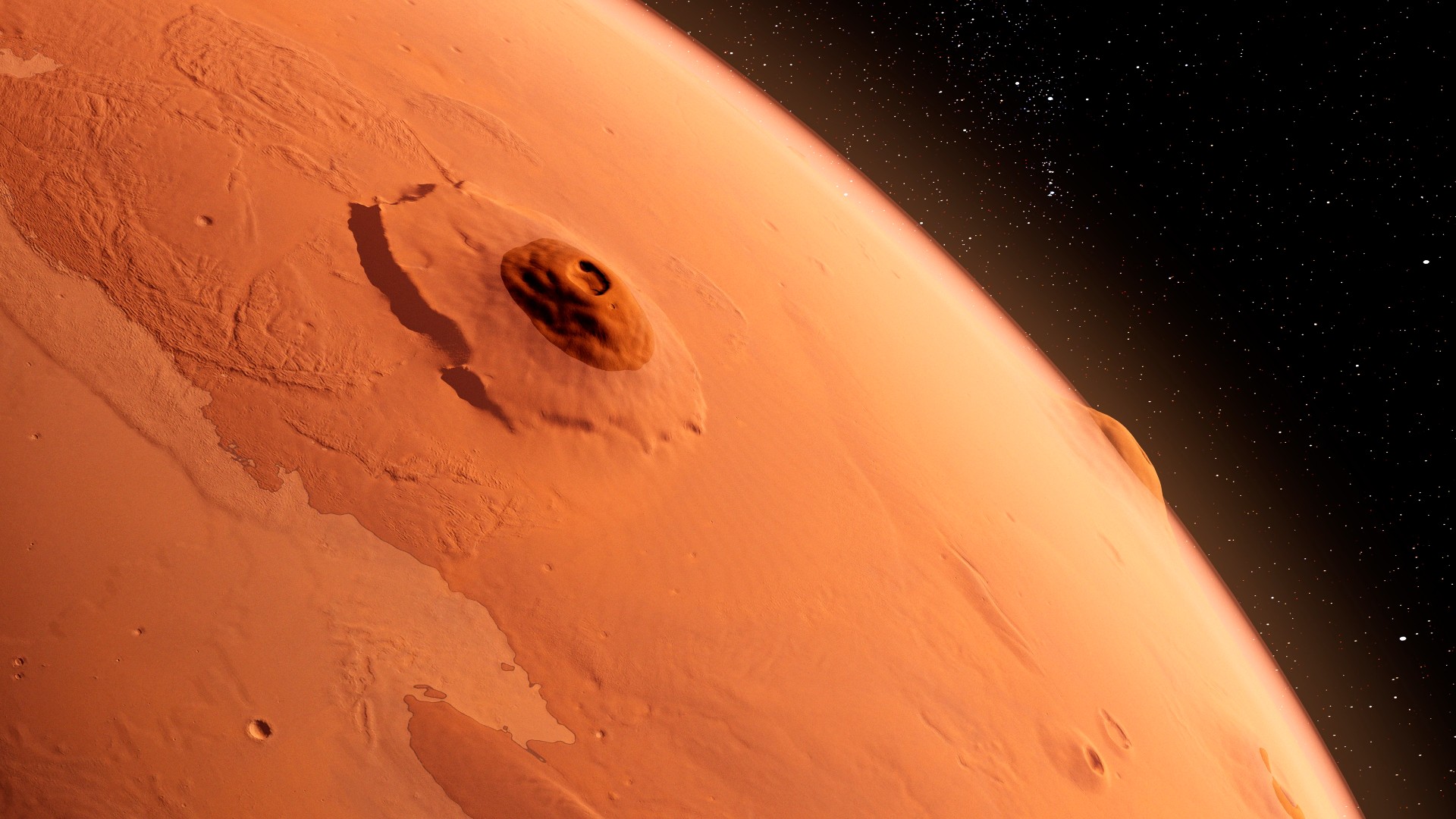
— in the form of frost.
In total, researchers believe there could be at least 150,000 tons of water frost — the equivalent of 60 Olympic swimming pools — on the four largest Martian peaks at any given time, images captured by ESA's Trace Gas Orbiter revealed.
Researchers had previously assumed this would be impossible because the sunlight at the equator, where all the volcanoes are located, is strong enough to turn any ice directly into gas. However, the new study shows that while the frost sublimates away every day, it reforms overnight.
Weird rocks
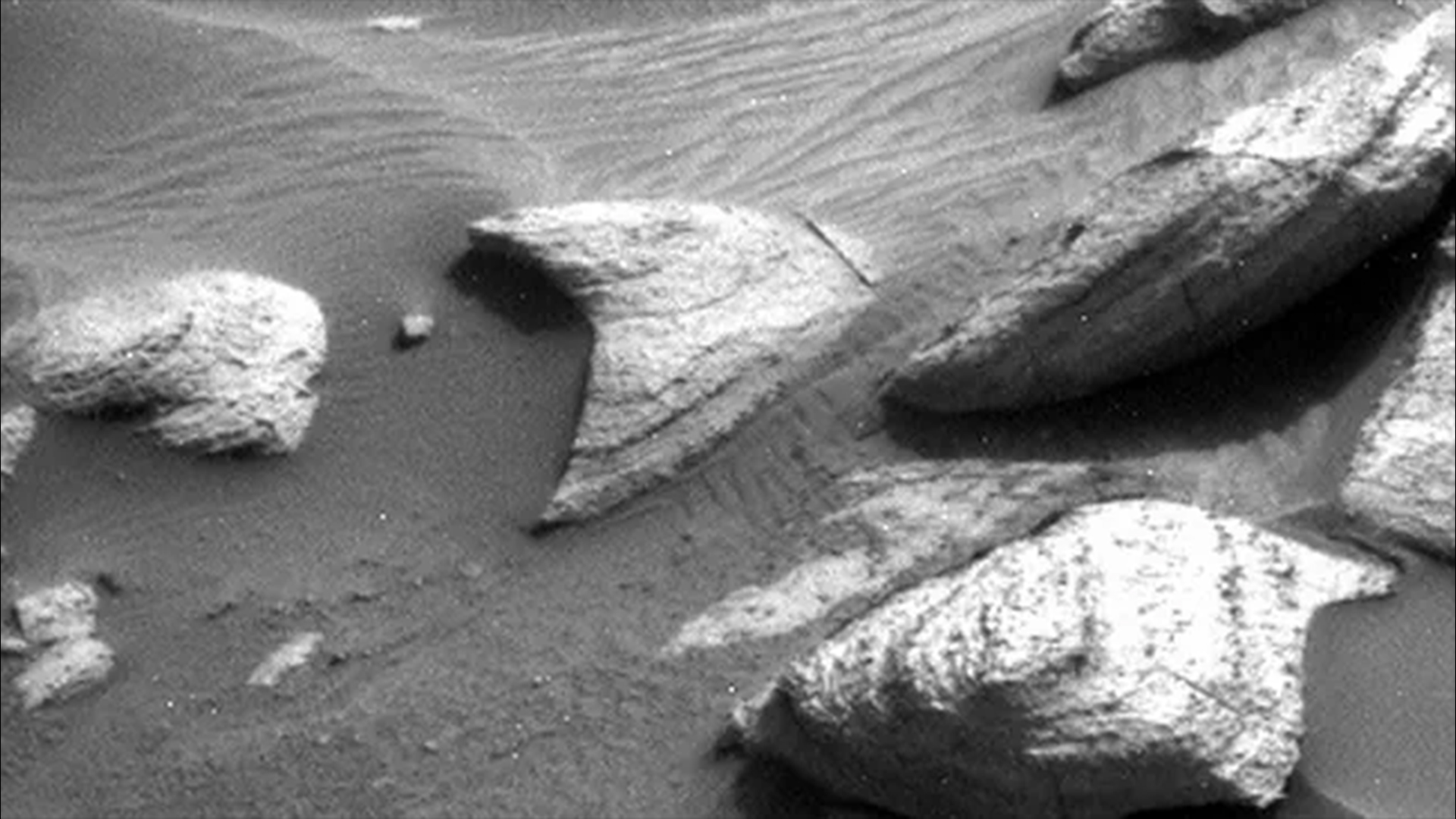
Mars' surface is littered with loose rocks, and this year NASA's rovers found a bunch of weird ones.
from "Star Trek."
in the Jezero Crater. Researchers said the pale rock, dubbed "Atoko Point" after a similarly strange rock in the Grand Canyon, is in a "league of its own" and could shed new light on Mars' past.
that is unlike anything else seen on the Red Planet. The exact origin of this rock, dubbed "Freya Castle," is unknown, but researchers suspect it was made via volcanic processes.
"Cryptic terrain" and dark dust
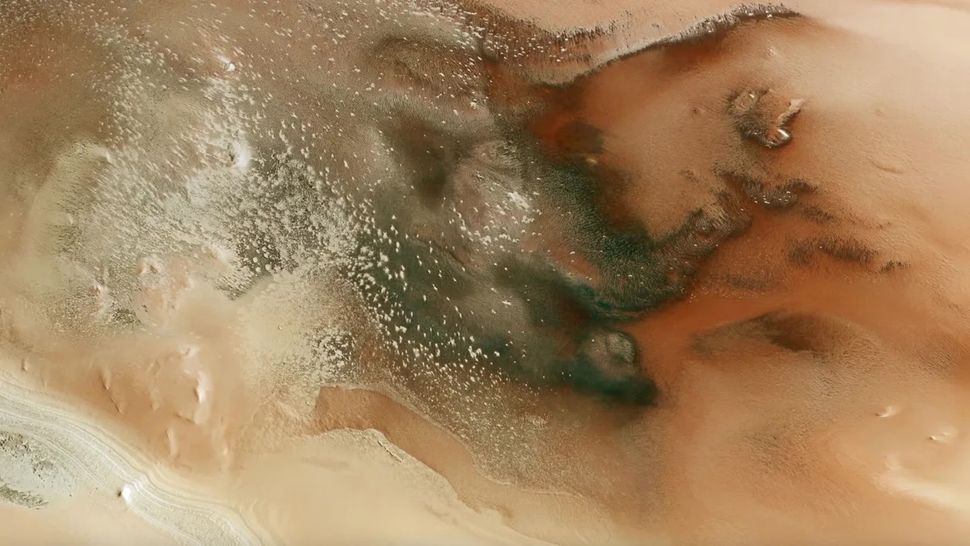
In April, ESA's Mars Orbiter captured images of surface features around the planet's south pole that researchers said were "surprisingly dark compared with their icy surroundings."
and believe they are caused by patches of CO2 ice that repeatedly freeze and sublimate throughout the year. This is a seasonal cycle, where the ice appears during the Martian autumn and disappears in spring.
The team also identified specific places where they believe that dark dust gets pulled up from the surface through the ice, similar to how "spiders on Mars" form, creating polygonal shapes where the dust absorbs additional sunlight and causes ice to sublimate faster.
Green spots
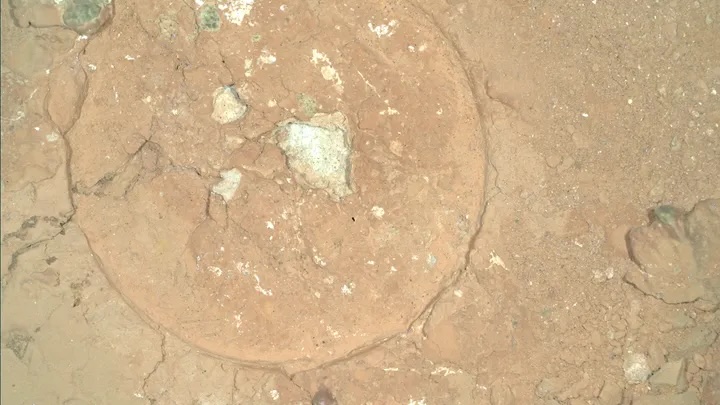
this year.
The tiny spots, which measure around 0.08 inches (0.2 centimeters) across, were photographed by the rover in August as it surveyed an area dubbed "Serpentine Rapids." The colorful patches were embedded within rocks alongside white dots. Green spots like these can be found in rocks on Earth when iron gets oxidized, giving the rocks a similar composition to rust — and researchers believe the same thing is probably happening on Mars.
On Earth, microbes often help oxidize rocks, hinting that the same could have happened on the Red Planet. However, the spots can also form via abiotic factors.
Buried ice chunks
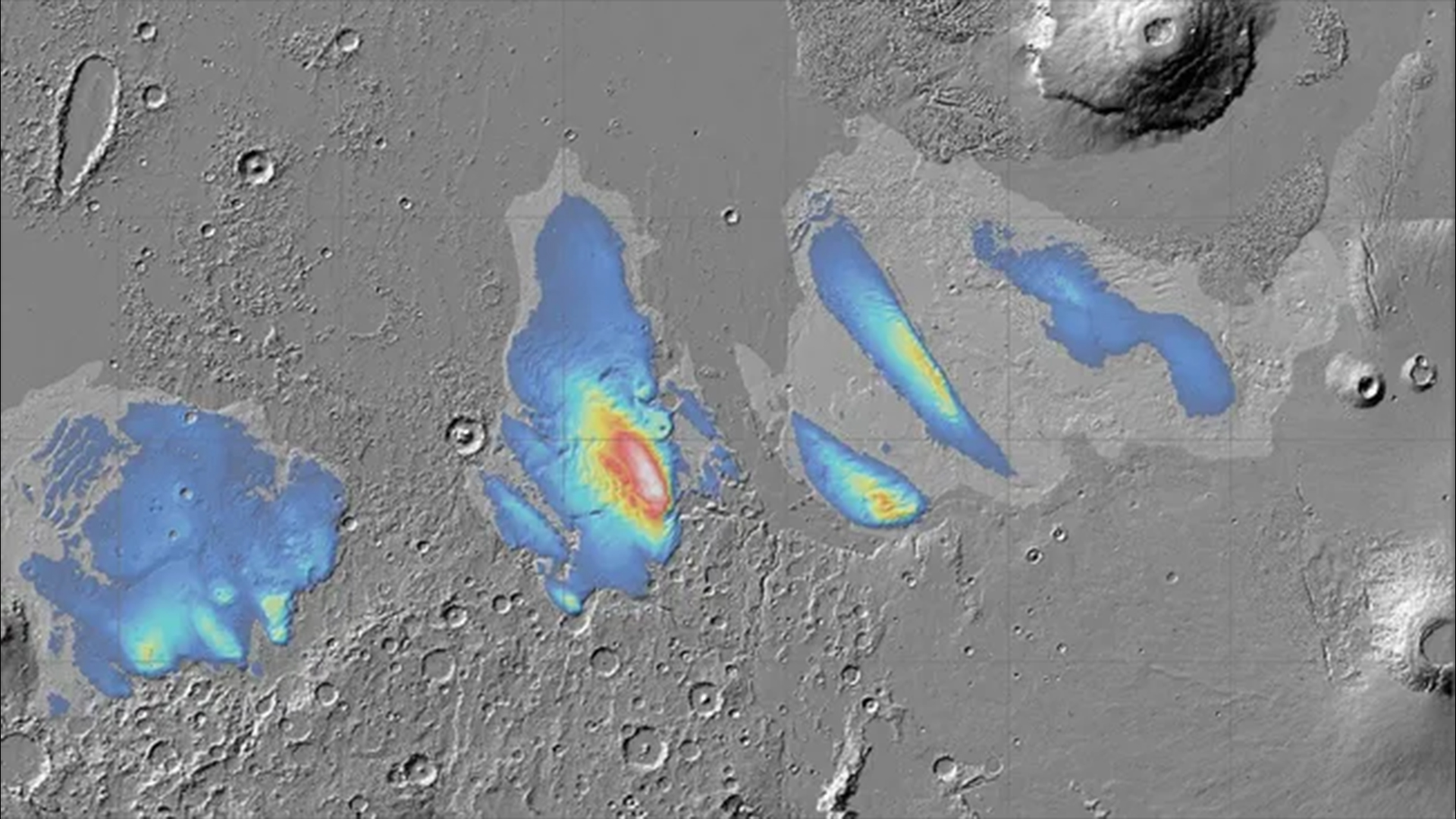
this year.
The submerged blocks, which extend 2.3 miles (3.7 km) below the surface, were spotted using radar images captured by ESA's Mars Express Orbiter. They are hiding beneath a geological formation called the "Medusae Fossae Formation" and are covered by thick layers of ash and dust.
It is unclear how the ice got buried, but this is not the first time that frozen water has been found beneath Mars' equator, suggesting it could be a good idea to set up future Martian bases near the planet's middle.


Post a Comment
0Comments